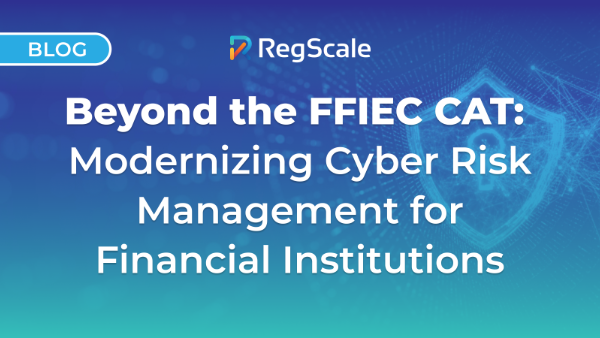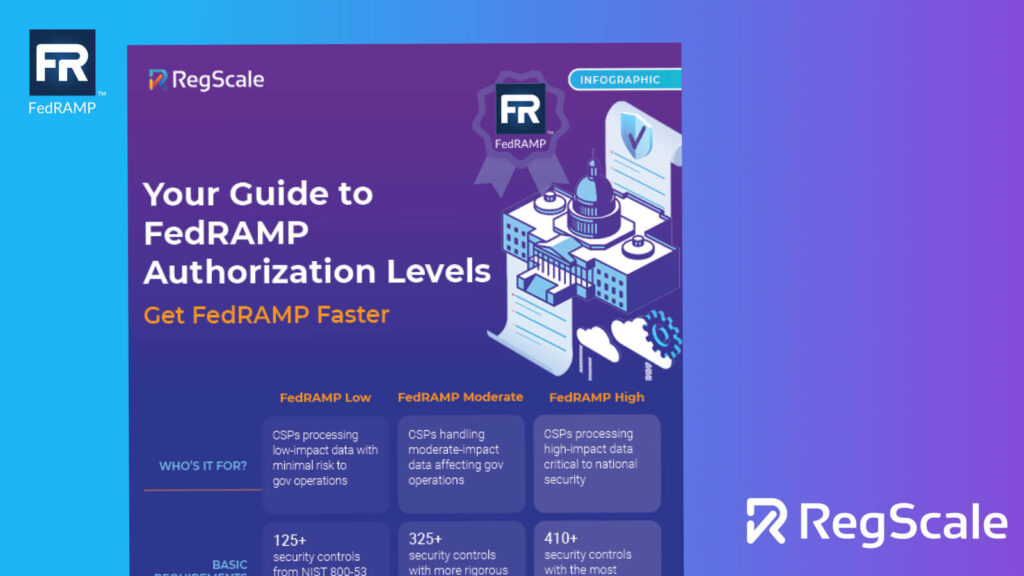Beyond the FFIEC CAT: Modernizing Cyber Risk Management for Financial Institutions

If you’re in financial services, you’ve probably heard the news: the FFIEC Cybersecurity Assessment Tool (CAT) is going away. Whether you’re rejoicing, weeping, or somewhere in the middle, you’re probably wondering what comes next.
The Federal Financial Institutions Examination Council announced they’ll be sunsetting the CAT on August 31, 2025, citing resource constraints in maintaining the platform. And that leaves compliance teams with an excellent opportunity to modernize their approach to cybersecurity risk management.
Let’s Be Honest About the CAT
Look, we’re not going to speak ill of a tool that’s served the industry for years. But let’s be real — nobody was exactly jumping for joy when it came time to use the FFIEC CAT. It consisted of over 500 static questions that gave you a snapshot in time and then… that was it. You’d answer everything, get your output, and basically start the whole process again later.
The FFIEC CAT was like taking a photo of your cybersecurity posture instead of having a live video feed. It was highly valuable in the past — but in today’s threat landscape for financial services, that’s just not enough anymore.
Now, with the Federal Financial Institutions Examination Council sunsetting the tool, the industry has a real opportunity to update how they handle cyber risk management.
Spotlight on the Cyber Risk Institute
So, what’s next? The FFIEC is pointing institutions toward industry options like the Center for Internet Security Critical Security Controls and the Cyber Risk Institute (CRI).
Unlike the more static CAT tool, the CRI Profile v2.1 isn’t just another set of compliance checkboxes to tick. It’s built around the industry-leading frameworks that financial institutions are already dealing with, condensing 2500+ global requirements into 218 common controls. As a result, CRI can help improve organizations’ risk management posture and operational efficiency, not just their compliance paperwork.
The CRI framework’s comprehensive mapping also extends beyond FFIEC requirements to include the NIST Cybersecurity Framework and other enterprise frameworks. This cross-framework mapping and multi-framework support address the reality of the ever-growing stack of regulatory requirements that financial institutions are facing.
The beauty of CRI is that it can be right-sized to every financial institution with its Impact Tiering Questionnaire. Whether you’re a community bank or a major financial player, there’s a version that makes sense for your organization.
The RegScale-CRI Collaboration
Here’s where RegScale comes into the picture. The CRI Profile gives you an industry-leading framework, and RegScale turns that framework into something you can work with every day. Thanks to our CRI collaboration, RegScale can create complete visibility across all your controls and risk management activities in a single pane of glass.
The real value comes from automation. RegScale handles the operational heavy lifting around the CRI Profile: automatically triggering risk alerts when controls are updated, tracking changes to residual risk as they happen, and eliminating the human error that comes with manual processes. No more copy-and-paste marathons or wondering if someone forgot to update a critical document.
With the RegScale-CRI collaboration, your daily workflow becomes straightforward: Log into the dashboard, see what’s changed overnight, and get a complete overview of your risk matrix. This continuous visibility means you’re always prepared for examinations and always audit-ready.
We also make it easier to meet regulatory exam demands by keeping everything centralized, current, and accessible when regulators need to see it. The result? You can cut down the amount of time you need to respond to an audit request and lighten the manual documentation burden for your team so you’re not scrambling when the examiners show up.
Benefits for Your Business
Let’s cut to the chase — what does this transition actually mean for you? Here are the real business outcomes we’re talking about:
- Enhance regulatory confidence: You’ll have solid evidence of your controls and the systems backing them up. When examiners and auditors come knocking, you’re not scrambling to find documentation.
- Gain operational efficiency: We’re talking about removing operational pain and gaining resource efficiency. Let your team focus on strategy instead of manual busywork.
- Maximize your investments in your tech stack: You don’t need to rip and replace everything. Our integrations help you get more value from the tools you already have in place.
- Scale quickly and effectively: Whether you’re a midsize bank or a top global institution, the solution grows with your business case and institution size.
- Shift left with compliance as code: If you’ve already seen the benefits of infrastructure as code, this is the same concept for compliance. Move away from treating compliance like a checklist and actually operationalize it to build real cyber resilience.
Seizing the Modernization Opportunity
The sunset of the FFIEC CAT represents more than just a tool replacement. It’s an opportunity to fundamentally transform how financial institutions approach cybersecurity risk management. By embracing the CRI framework through RegScale’s platform, institutions can shift from reactive compliance checks to proactive risk management and operational excellence.
The transition period leading up to August 31, 2025, provides the perfect window to implement a more modern, dynamic approach to cybersecurity risk management. Rather than simply finding a 1:1 replacement for the CAT, forward-thinking institutions can use this moment to address their deeper operational pain points and establish a foundation for long-term cyber resilience.
The future of cybersecurity for finance doesn’t lie in static assessment tools. It’s all about dynamic, integrated platforms that provide continuous insight and regulatory confidence — and the time to make the transition is now.
Ready to get started?
Choose the path that is right for you!
Skip the line
My organization doesn’t have GRC tools yet and I am ready to start automating my compliance with continuous monitoring pipelines now.
Supercharge
My organization already has legacy compliance software, but I want to automate many of the manual processes that feed it.
